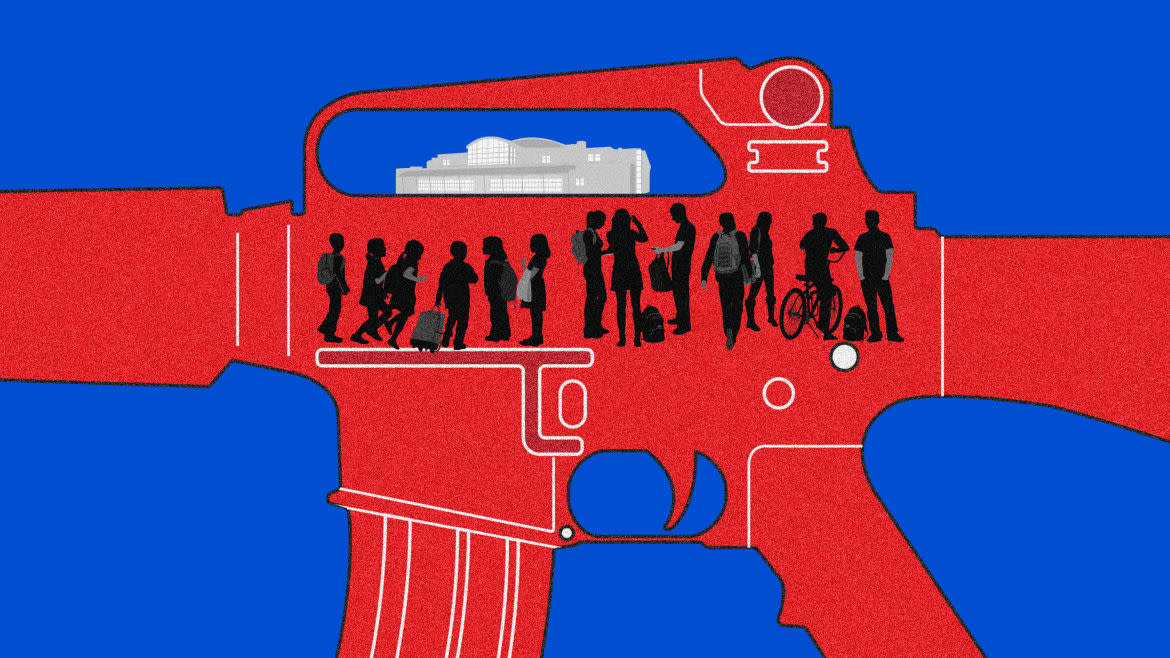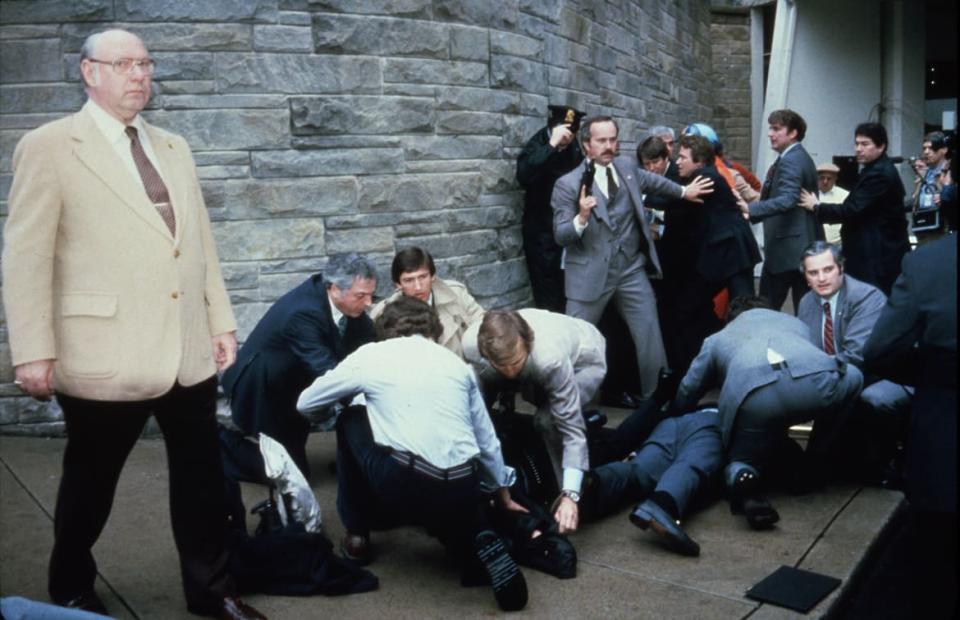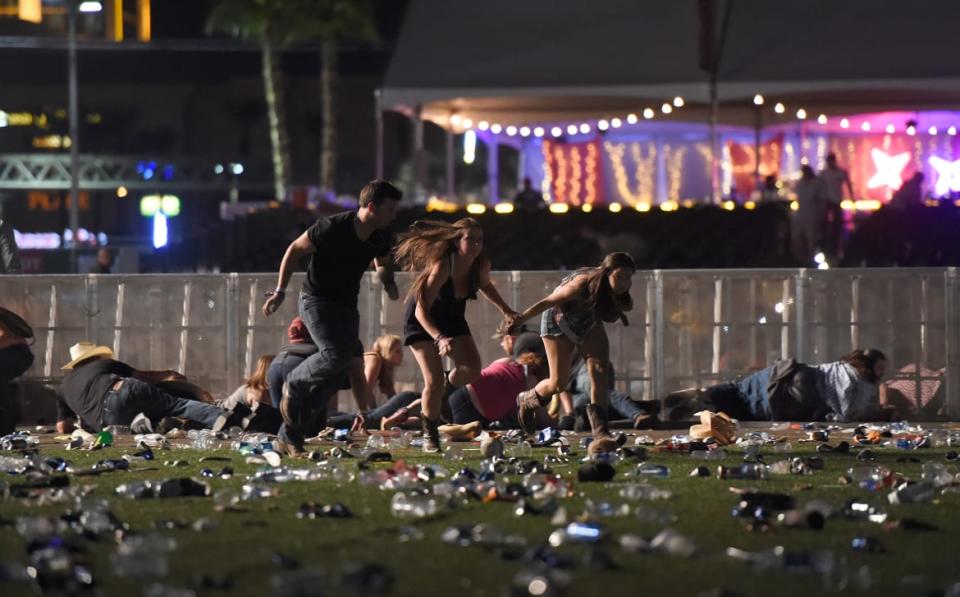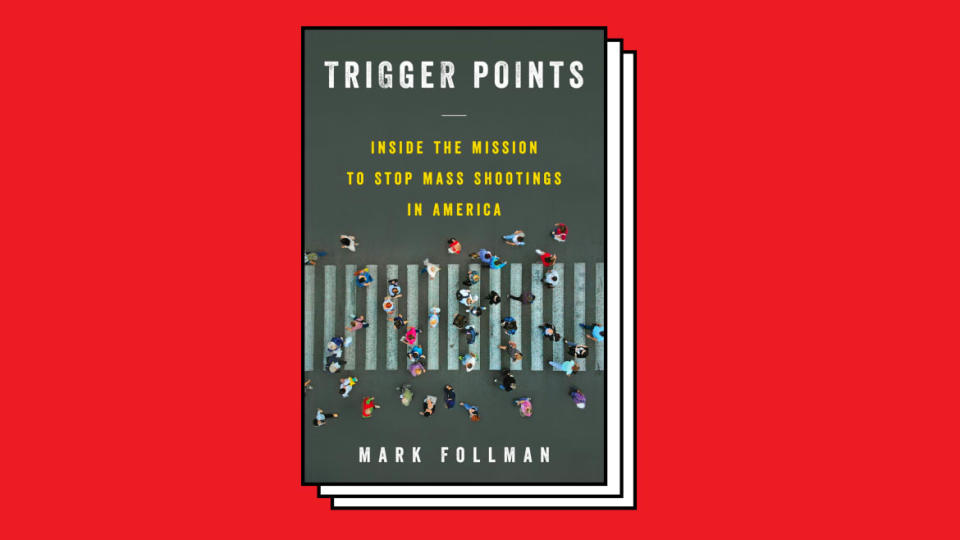These Heroes Try to Stop Mass Shootings Before They Happen

For years, people have asked Mark Follman, who covers mass shootings at Mother Jones, when he would write a book on guns.
That didn’t interest Follman, who says hundreds of books already exist about guns and the politics around them. Instead, he wrote Trigger Points: Inside the Mission to Stop Mass Shootings in America, about the field of threat assessment, where people with expertise in law enforcement and mental health look at the behaviors leading to these acts of violence and try to intervene. The subject, little-known when Follman started working on it, was thrilling for him as a journalist, he says—to study human behavior and a way to stop horrific events.
“We don't have to be resigned to the idea that this problem is just going to go on forever,” he said on a video call. “We spend a lot of energy and resources and build policy on reacting to shootings. We’re responding to what do we do when the mass shooter comes in. Why don’t we say, “How about let’s get in the way of the person who’s becoming the mass shooter before they become the mass shooter?”
After a gunman opened fire in a movie theater in Aurora, Colorado, in 2012, killing 12 people, Follman started covering mass shootings. One of the first things he did was look for a database showing how often these types of events happened. None existed. So Follman and some colleagues at Mother Jones decided to build it.
Supreme Court Paves Way for Even Looser Gun Laws Weeks After Uvalde Massacre
In a 2013 speech to police chiefs, then-Attorney General Eric Holder stated that the FBI had stopped more than 100 “active shooters” that year—a number that caused Follman’s eyebrows to shoot up and made him want to investigate the threat assessment field.
Follman starts off Trigger Points in the Happiest Place on Earth—Disneyland—the unlikely spot where the Association of Threat Assessment Professionals have their annual summit, attending sessions like “Evil Thoughts, Wicked Deeds,” and “20 Years of Workplace Shootings,” while families outside line up for rides and enjoy ice cream cones. To write his book, Follman spent years interviewing people working in this field, including in law enforcement, mental health, education, and security specialists. He researched Secret Service and FBI investigations into serial killers and stalkers after the murder of John Lennon and the shooting of Ronald Reagan. Follman also spent time with the FBI's elite Behavioral Analysis Unit and in a school district in Salem, Oregon, with a comprehensive violence-prevention program that aimed to support rather than punish. He saw how interventions could work.

Chaos surrounds shooting victims immediately after the assassination attempt on President Reagan on March 30, 1981, by John Hinkley Jr. outside the Hilton Hotel in Washington, D.C.
Follman has a few things he’d like us to know about mass shooters, especially around mental illness and the idea that these are impulsive acts. Research shows people who carry out mass shootings often plan carefully, he says, meaning they leave clues. Trying to make sense out of something so awful and incomprehensible means we sometimes think of them as monsters, Follman says, contributing to the idea there’s nothing to be done.
“The general public perception is that they’re completely detached from reality—as if they don't know what they're doing,” Follman said. “That combines with this other big myth about this notion of ‘snapping’, which suggests all of a sudden something clicks, the switch goes off, and they run out and commit a mass shooting. It’s as if it’s an impulsive behavior and it’s not. None of that is true. When you study the forensic cases, evidence in mass shootings, not only are people not snapping, they’re planning over a period of time.”
The planning means that there are signs to watch out for—and ways to intervene. Another myth Follman points out is that mass shooters are mentally ill. Although many are suicidal and depressed and far from mentally healthy, most do not have a mental illnesses like paranoid schizophrenia, he says—and the idea that they do hurts people who do have these illnesses, who mostly aren’t violent.
The way the media covers these mass shootings has improved, Follman writes, pointing to how coverage has shifted in response to the shooters’ desire for everyone to know their name. After parents of a 24-year-old killed in the Aurora shooting started a “No Notoriety” campaign, journalists like CNN’s Anderson Cooper pledged not to name shooters or show their photos on air. After the 2017 shooting on the Las Vegas Strip that killed 58 people and wounded hundreds of others, Follman points out both broadcast and print media avoided images of the perpetrator, who had committed suicide, instead focusing coverage on the first responders and survivors. Follman also writes about how New Zealand Prime Minister Jacinda Ardern responded to two shootings at Christchurch mosques in 2019, saying about the perpetrator: “He is a terrorist. He is a criminal. He is an extremist. But he will, when I speak, be nameless.”
For Follman, spending time with those who worked to stop violence—like John Van Dreal, a school psychologist (and successful painter) who was the director of security, safety, and risk management for the Salem-Keizer School District, which had a lot of success in diverting potential school shooters, or Robert Fein who put his degree in clinical psychology from Harvard to use working with some of the most brutally violent men in Massachusetts—was interesting and hopeful.

People run from the Route 91 Harvest country music festival after a gunman opened fire on the crowd on Oct. 1, 2017, in Las Vegas.
“They’re very dedicated and passionate about preventing predatory violence,” Follman said about the people who work as threat professionals. “They’re engaging this dark material, and yet, most of them struck me at their core as optimistic people who felt they could do something about this.”
Early in his research, Follman met Kristina Anderson, a woman who survived the 2007 shooting at Virginia Tech, where the shooter killed 27 students and five faculty members and physically injured 27 more. The toll was highest in the French class Anderson attended that morning, where her teacher and 11 of the 18 students died.
After this horrific experience, Anderson chose to do what she could to prevent more shooting, working on violence prevention and creating threat assessment teams, especially in schools and colleges.
This commitment inspires Follman.
“I think part of what I found so striking was this unimaginable trauma she’d gone through, and she choose to make productive work out of it,” he said. “She had this fierce dedication to idea of prevention and was responding to this unimaginable horror with goodness.”
Follman also writes about a mother of a child who was one of 20 killed in the 2012 shooting at Sandy Hook Elementary School. After growing frustrated with efforts to lobby Congress, she focused on early intervention, helping to create a group, Sandy Hook Promise, and using her communications background to make short videos about signs to look out for, some of which went viral.

Follman acknowledges that showing the effectiveness of threat assessment—proving that something didn’t happen—is hard. He writes about Reid Meloy, a research expert and practitioner, who compares it to what cardiologists do. A doctor wouldn’t be able to tell you they prevented a heart attack, he says, but they can help their patients lower the risk of having one.
Follman sees this method of prevention is effective and powerful, and he points out in a school district, like in Salem, the infrastructure is in place with people whose work is helping children. He thinks if a program like this had been available in Uvalde, Texas, where an 18-year-old shot 19 students and two teachers in an elementary school on May 24, maybe that shooter could have been stopped.
“If you have a principal who is on a threat assessment team in a school system and a person like that is reported to them as raising fear and concern, then they have the training, the knowledge, and the protocols for addressing it,” he said. “Then as you see in the book, it’s a very different situation.”
Get the Daily Beast's biggest scoops and scandals delivered right to your inbox. Sign up now.
Stay informed and gain unlimited access to the Daily Beast's unmatched reporting. Subscribe now.

